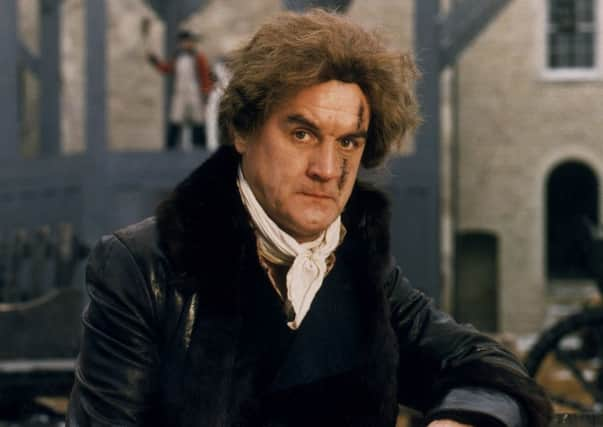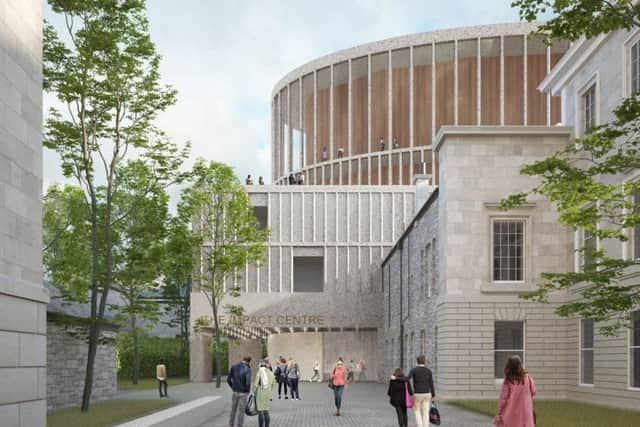Steve Cardownie: It would be criminal to forget the Brodie story


As a former councillor of many years standing I was privlieged to be one of that number and counted myself extremely lucky to work in such an environment. Another bonus was that there was no shortage of meeting places outwith the Chambers on offer where informal discussions could be held or where the opportunity to wind down and socialise was gratefully grasped.
One such venue was Deacon Brodie’s Tavern, conveniently situated in The Lawnmarket which served a varied array of refreshments and was huge favourite of tourists and citizens alike. One of the additional attractions for me was the story of Deacon Brodie himself and his role in Edinburgh society, particularly as he used to be a town councillor.
Advertisement
Hide AdAdvertisement
Hide AdHowever if that was not enough, his story is far more interesting than that and even inspired a literary giant to pen a work of fiction read and enjoyed throughout the world and was also the subject of several films.


As well as being a councillor, William Brodie was also a cabinet maker and deacon of a trades guild, who lived the secret life of a burglar or house-breaker. He was born on September 28, 1741 and came to an untimely and rather ironic end on October 1, 1788 at the ripe old age of 47.
His work as a cabinet maker led him to install and repair locks on the doors of his customers, copying keys using wax impressions. As such he was a renowned locksmith and pillar of society, who often worked in the houses of the richest members of Edinburgh society, thereby providing him with the ill-gotten gains he used to fund his gambling and maintain his five children and two mistresses who also formed part of his secret life.
He reputedly embarked upon his criminal career when he stole £800 from a bank after copying door keys which led him down the path which would ultimately seal his fate.
Advertisement
Hide AdAdvertisement
Hide AdAfter being “grassed” to the authorities by his partners in crime, he fled to the Netherlands to board a ship to America but was arrested in Amsterdam and sent back to Edinburgh for trial. His trial started on August 27, 1788 and although there was no hard evidence against him, copies of keys, a pistol and disguise were found at his house and this, along with the testimony of his sometime partners and incriminating letters he wrote whilst on the run, led the jury to find him guilty. He was hanged on gallows that he had reputedly designed himself at The Old Tolbooth before a crowd of 40,000.
One story goes that he wore a steel collar and silver tube to prevent his inevitable death and after bribing the hangman to ignore it, his plan was for his body to be immediately removed by friends in the hope that he could then be revived.
If that was the plan it wasn’t a very good one because he was buried in an unmarked grave at the Buccleuch Church, which has since been covered by a car park.
Robert Louis Stevenson was fascinated by the double life that Brodie successfully led for many years and this prompted him to write the novel The Strange Case Of Dr Jekyll And Mr Hyde, which was published in 1886 and is still avidly read at home and abroad. As well as the pub, the close on The Royal Mile that contained his family residence and workshops bears the name Brodie’s Close and he also has a bar named after him in New York.
Advertisement
Hide AdAdvertisement
Hide AdThe BBC broadcast an episode of Screen One about Brodie’s life which was shot in Edinburgh and starred Billy Connolly in the principal role which brought his story to a wide audience and was well received.
I have spent many a pleasant hour or two in the Tavern that bears his name and whatever your take is on the man, there is no denying that Deacon Brodie was larger than life and was one of the many exciting Edinburgh characters that people still talk about to this day. We should count our blessings that we live in a city with such a colourful past!
Let’s hope new concert hall is in tune with buildings around it
Much to the delight of the Edinburgh populace, the redevelopment of St James shopping centre and New St Andrew’s House is proceeding apace.
Advertisement
Hide AdAdvertisement
Hide AdThe new £1 billion St James Quarter will be a landmark for generations to come and it is imperative that the planning committee get it right, as they will not be forgiven if they repeat some of the mistakes that were made when approval was given for the original development. It was a complete eyesore that detracted from the architectural splendour of the city.
The bold and imaginative plans for the new development would be a credit to any city but all the more so given that it will dominate a prominent position in Scotland’s capital. Given this site’s troubled history, planners should pay attention to the most recent comments made by Martin Perry (the development director, responsible for St James Quarter development) on the proposed new concert hall, pictured, which will sit cheek by jowl to the new development.
He said: “We believe that the suggested concrete finishes of the new building are completely inappropriate and will not enhance this very special area of the city.”
As he speaks with some authority it would be foolish to dismiss his opinion out of hand and it should be given careful consideration.
Advertisement
Hide AdAdvertisement
Hide AdHowever I am confident that the planning committee will take such views into consideration and that the city will get the new concert hall it deserves, one that will enhance the overall project and one of which the city can be proud.
Tower shocker just despicable
Just when you think that people can only stoop so low, some will come along and shatter that illusion. The sight of a flammable model of Grenfell Tower, complete with figures of people at the windows, being placed on a bonfire in south London to the accompaniment of whoops of delight and mocking “help me, help me” shouts was truly shocking.
What chance have children got when adults behave in such a manner, displaying their racism and hate for all to see at what should have been a fun event for kids?
The horrendous fire at the west London block of flats cost the lives of 72 people and that tragic event will live long in the memory for those that endured it, and for those who witnessed it on their screens.
Advertisement
Hide AdAdvertisement
Hide AdThe placing of the cardboard model on the bonfire was not just a bit of harmless fun but more the manifestation of hate and intolerance towards others of a different ethnic origin which is still harboured by so many. At least the public outcry against this despicable act offers some hope for the future, which, for the sake of our children, demonstrates that humanity is good and it will take more than the actions of a few rotten apples to let us forget it.